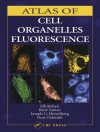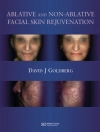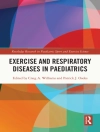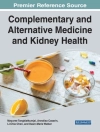Functional Neuroradiology: Principles and Clinical Applications, is a follow-up to Faro and Mohamed’s groundbreaking work, Functional (BOLD)MRI: Basic Principles and Clinical Applications. This new 49 chapter textbook is comprehensive and offers a complete introduction to the state-of-the-art functional imaging in Neuroradiology, including the physical principles and clinical applications of Diffusion, Perfusion, Permeability, MR spectroscopy, Positron Emission Tomography, BOLD f MRI and Diffusion Tensor Imaging.
With chapters written by internationally distinguished neuroradiologists, neurologists, psychiatrists, cognitive neuroscientists, and physicists, Functional Neuroradiology is divided into 9 major sections, including: Physical principles of all key functional techniques, Lesion characterization using Diffusion, Perfusion, Permeability, MR spectroscopy, and Positron Emission Tomography, an overview of BOLD f MRI physical principles and key concepts, including scanning methodologies, experimental research design, data analysis, and functional connectivity, Eloquent Cortex and White matter localization using BOLD f MRI and Diffusion Tensor Imaging, Clinical applications of BOLD f MRI in Neurosurgery, Neurology, Psychiatry, Neuropsychology, and Neuropharmacology, Multi-modality functional Neuroradiology, Beyond Proton Imaging, Functional spine and CSF imaging, a full-color Neuroanatomical Brain atlas of eloquent cortex and key white matter tracts and BOLD f MRI paradigms.
By offering readers a complete overview of functional imaging modalities and techniques currently used in patient diagnosis and management, as well as emerging technology, Functional Neuroradiology is a vital information source for physicians and cognitive neuroscientists involved in daily practice and research.
Tabla de materias
Part I. BOLD Functional MRI – 1. Principles of BOLD Functional MRI; 2. MRI Scanning Methodologies for f MRI; 3. Data Analysis and Experimental Design; 4. Challenges in f MRI and its Limitations; 5. Clinical Challenges in f MRI; Part II. f MRI Clinical Applications – 6. Localization of Brain Activation Centers for Neurosurgical Planning; 7. f MRI of Psychiatric Disorders; 8. f MRI of Memory; 9. f MRI of Language; 10. f MRI Wada Test: Prospects for Presurgical Mapping of Language and Memory; 11. f MRI of Epilepsy; 12. f MRI of Visual Pathway; 13. f MRI of Auditory Cortex; 14. f MRI of Pediatric Applications; 15. f MRI of Pain; 16. f MRI of Pharmacological Applications; 17. Cognitive Neuroscience Applications; Part III. Diffusion Tensor Imaging – 18. Basic Physics of DTI; 19. Normal Anatomic Atlas of Common White Matter Tracts using DTI; 20. Clinical Applications of DTI (DTI – 2D and 3D Tractology techniques); 21. DTI – Surgical Perspectives and Applications of DTI; 22. DTI and f MRI: Review of Complimentary Techniques; Part IV. Perfusion and Diffusion Imaging – 23. Basic Physics of Perfusion – Gadolinium Bolus Technique: Perfusion and Permeability and Non-Gadolinium (Arterial Spin Labeling) Technique; 24. Basic Physics of Diffusion; 25. Clinical Applications of Perfusion; 26. Clinical Applications of Diffusion; 27. Stroke (Brain Attack): Clinical Applications of Perfusion and Diffusion; Part V: Magnetic Spectroscopy; Part VI: Molecular Imaging; Part VII: Metabolic Imaging; Part VIII: Functional Imaging-Based Diagnostic Strategy: Intraaxial Brain Masses; Part IX: Physiologic Positional Spine Imaging; Part X: Neuroanatomical Atlas – BOLD; Part XI: Neuroanatomical Atlas – DTI
Sobre el autor
Scott H. Faro, MD Professor, Radiology Director, Functional Brain Imaging Center and Clinical MRI Temple University School of Medicine Philadelphia, PA, USA Feroze B. Mohamed Associate Professor, Department of Radiology Temple University School of Medicine Philadelphia, PA, USA












